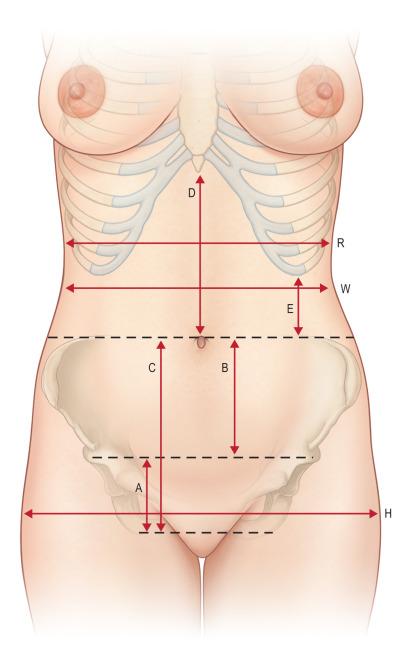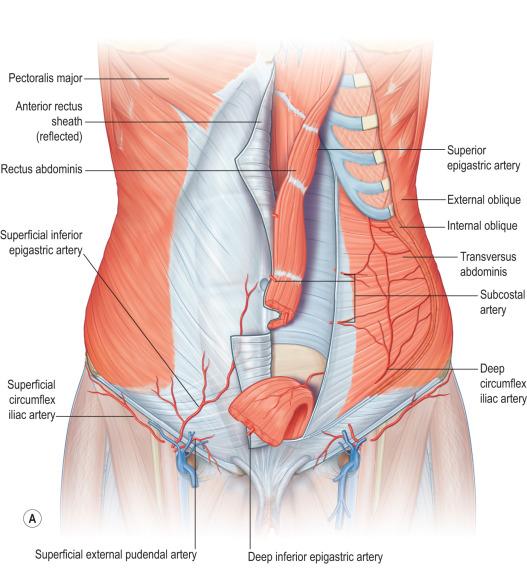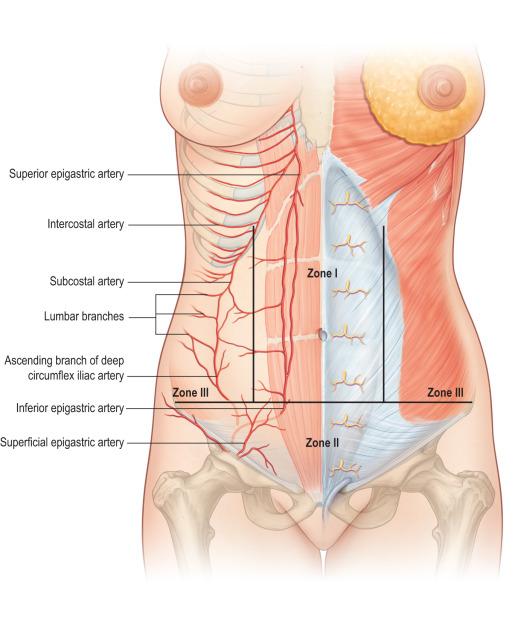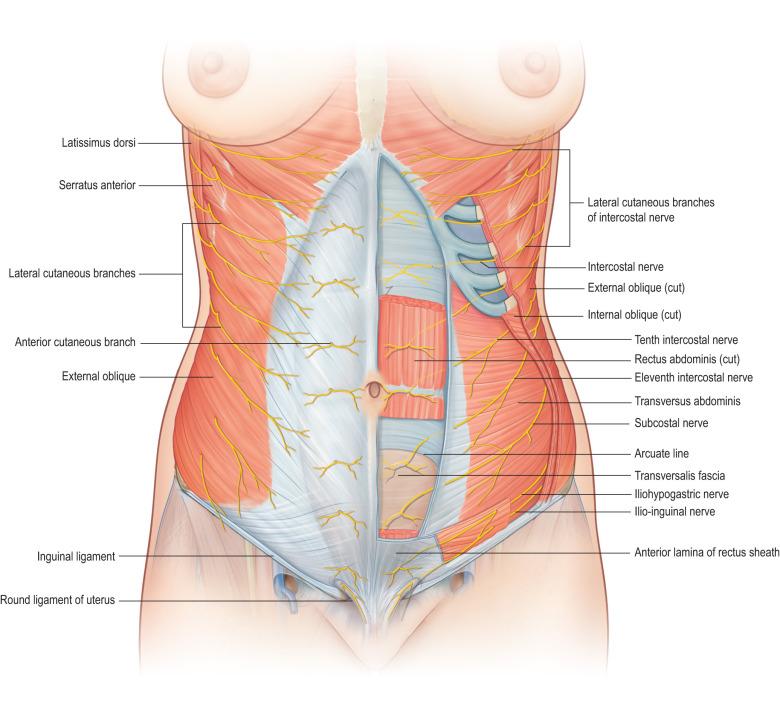Physical Address
304 North Cardinal St.
Dorchester Center, MA 02124
Assessment of the abdominal region includes a detailed medical and physical history, including pregnancies; prior surgeries, especially in the lower truncal area; and weight changes. Preoperative identification of any existing ventral hernia, including diastasis recti, is imperative.
Essential abdominal exam findings include the existence and localization of vertical and horizontal tissue excess, the relationship between fatty excess and skin excess, and examination of the umbilical stalk with exclusion of umbilical hernia.
Further perioperative adjuncts include preoperative bowel evacuation for reduction of intra-abdominal pressure, careful intraoperative tissue handling, maintenance of an adequate body temperature, sufficient medical thromboembolism prophylaxis, precise intraoperative preparation with respect to anatomical key points, postoperative compression treatment, and early management of postoperative complications such as seromas.
The fleur-de-lis abdominoplasty allows an improvement of the entire abdominal area with simultaneous tightening of the waist circumference. Hereby it is essential to initially assess and temporarily close the vertical line prior to resection of the lower abdominal redundant tissue. Care should be taken to avoid extending the vertical incision line cranially between the breasts.
In patients after massive weight loss, aesthetic outcome will improve by high-lateral-tension (HLT) and fleur-de-lis abdominoplasty. However, in most cases, circumferential truncal procedures are necessary for superior results.
The preservation of the loose areolar epifascial tissue allows preservation of subfascial lymphatic vessels, which reduces the incidence of seroma formation.
It is mandatory to analyze any suspected skin tumor in the area of excised tissue.
Lipoabdominoplasty is a powerful technique that can improve abdominal contour by combining the effects of abdominoplasty with liposuction. The two fundamental principles of this technique are preservation of abdominal wall perforators and the use of superficial liposuction to reduce the adiposity above Scarpa fascia layer and significantly mobilize the abdominal wall flap.
Abdominoplasty is one of the most commonly performed aesthetic procedures, which encompasses not only aesthetic features but also structural reconstruction of the abdominal wall.
Due to the number of variations and modifications of abdominoplasty procedures, it is critical to select the appropriate technique based upon patient characteristics in order to minimize morbidity and postoperative disability while providing a desirable and predictable result.
Pregnancy is the most common cause of abdominal wall aesthetic deformities because the skin and musculoaponeurotic structures are stretched beyond their biomechanical capability to retract.
Massive weight loss after dieting or bariatric surgery results in excess, inelastic skin and subcutaneous tissue and a laxity of the abdominal wall musculature.
Fat accumulation occurs in a distribution pattern that varies according to the gender. Normal anatomic abdominal proportions can be found in Fig. 6.1 .
Women tend to add local adiposity in the lower trunk and hip region as well as posterior thigh region, which can result in cellulite or fibrous septa within the subcutaneous tissue.
Men tend to add intra-abdominal adipose tissue, resulting in an increase in abdominal girth.

In addition to standard documentation of other medical co-morbidities and medications, the medical history should also include documentation of the following: a detailed weight history including current body mass index (BMI), history of weight fluctuations, and/or history of prior bariatric procedures; a detailed pregnancy history, including number of pregnancies/children and history of cesarean section; history of other abdominal surgeries, including suction-assisted lipectomy; and abdominal hernias.
Physical examination should be performed in the seated and upright positions, and should focus on the following findings and measurements:
Quality of skin.
Thickness of adipose tissue by pinching.
Number and location of folds.
Location of abdominal wall defects.
Patient's favored clothing.
Pre-existing scars.
Status of abdominal musculature.
Distance from umbilicus to top of mons, from umbilicus to sternal notch, and from anterior vulva commissure to top of mons.
Waist and hip measurement, waist-to-hip ratio.
In cases of diagnostic uncertainly, a computed tomography or magnetic resonance imaging test can be helpful in determining the presence of hernia.
Patient weight should be stable for at least 12 months preoperatively, with any desired weight loss achieved prior to the surgery.
Cessation of smoking should occur ideally 6 weeks prior to the surgery and after, but at the least 2 weeks prior and for at least 2 weeks postoperative to minimize the risk for postoperative wound complications.
Patients should take antiseptic showers in the evening and morning prior to the surgery; the abdominal folds and the umbilicus should be cleaned thoroughly with cotton sticks and antiseptic solutions.
Anticoagulant drugs must be avoided prior to surgery. The patient should also avoid perioperative use of various homeopathic drugs and nutritional supplements, which can induce bleeding.
The abdominal wall is embryonically derived in a segmental manner, reflected in blood supply and innervation.
The umbilicus:
Situated in the midline, approximately 9–12 cm above the mons pubis.
The periumbical area is characterized by a round or ellipsoid shape with a slight depression of 4–6 cm in diameter.
The fascia surrounding the umbilicus can be unstable with an increased incidence for hernias, resulting in a risk of bowel injury during umbilical dissection.
The blood supply to the periumbilical area is supplied by branches from the subdermal plexus, from both deep inferior epigastric arteries as well as the median umbilical ligament.
The skin of the abdomen has areas of increased adherence to the underlying fascia (“zones of adherence”), such as the anterior superior iliac crest and the linea alba.
The abdominal subcutaneous tissue is divided by two layers of fascia, the superficial Camper fascia and the deep Scarpa fascia, a strong fibrous layer of connective tissue, which is continuous with the fascia lata of the thigh.
The superficial fat layer has a more compact character with smaller lobules and a rich vascularization, while the deeper fat layer contains larger lobules with a more scattered pattern.
The abdominal musculature includes four paired muscles, which are the rectus abdominis, connected in the median linea alba, the external oblique and internal oblique, and the transversus abdominis muscle, which incorporate into the anterior and posterior rectus sheath at the linea semilunaris ( Fig. 6.2 ) .

The abdominal lymphatic system is divided into a supra-umbilical system, which drains into the ipsilateral axillary lymph node basin, and an infraumbilical drainage system, which drains into the ipsilateral superficial inguinal lymph node basin.
The lymph vessels in the infra-umbilical area pass through the subscarpal plane, explaining the importance of Scarpa fascia preservation in abdominal wall surgery.
Huger described different zones of the abdominal blood supply, which should guide the surgeon in planning and performing a safe operation ( Fig. 6.3 ) :
Zone 1: the midline supplied by the vertically oriented deep epigastric arcade.
Zone II: the lower abdominal circulation supplied by the superficial epigastric, superficial external pudendal, and superficial circumflex iliac systems.
Zone III: the lateral aspect of the abdominal wall (flanks) supplied by the six lateral intercostal and four lumbar arteries.

In standard abdominoplasty procedures, the cutaneous blood supply to zone I and a main part of zone II is disrupted, resulting in an abdominal flap perfusion mainly supplied by zone III. Therefore, it is crucial to study any preoperative existing scar, such as subcostal cholecystectomy incisions. In certain circumstances, even a vertical midline incision can jeopardize flap perfusion.
Cutaneous sensation of the abdominal wall is derived from the anterior and lateral cutaneous branches of the intercostal nerves 8 to 12.
The anterior branches pass between the internal oblique and transversus abdominis muscles, enter the rectus abdominis muscle, and reach the overlying fascia and skin.
The lateral cutaneous branches penetrate the intercostal muscles in the midaxillary line, ending in the subcutaneous layer.
Both branches are responsible for the overlapping of the sensory dermatomes T5 to L1.
The ilioinguinal and iliohypogastric nerves, not involved in innervation of the abdominal wall, can be disrupted and injured in lateral transverse lower abdominal incisions, resulting in consistent sensory loss in the area of the groin and medioventral thigh ( Fig. 6.4 ) .

Patients with significant health risks, unrealistic surgical goals, and body dysmorphic disorder are primary contraindications for an elective abdominoplasty procedure.
Relative contraindications to abdominoplasty include right, left, or bilateral upper quadrant scars, further severe co-morbid conditions (e.g., heart disease, diabetes, morbid obesity, cigarette smoking), eventual future plans for pregnancy, a history of thromboembolic disease, and morbid obesity (BMI >40).
Patients with disposition to keloids or hypertrophic scars have to be informed and must accept the postoperative scarring associated with these conditions.
Become a Clinical Tree membership for Full access and enjoy Unlimited articles
If you are a member. Log in here